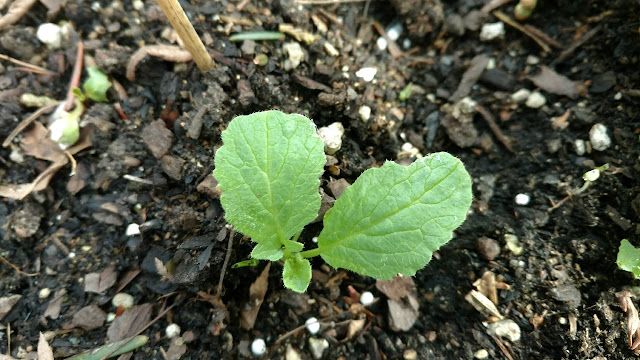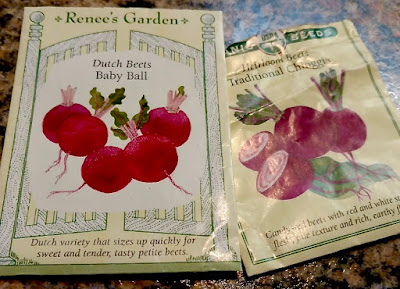
Beets do best in at-home trial, but other vegetables can still sprout, too

|
|
This Dutch Baby Ball beet sprouted from 6-year-old seed. (Photos: Debbie Arrington)
|

|
|
These older beet seeds were still good to grow.
|
|
Artichokes |
5 years |
|
Arugula |
3 years |
|
Beans |
3 years |
|
Beets |
4 years |
|
Broccoli |
3 years |
|
Brussels Sprouts |
4 years |
|
Cabbage |
4 years |
|
Carrots |
3 years |
|
Cauliflower |
4 years |
|
Celery/Celeriac |
5 years |
|
Chard |
4 years |
|
Collards |
5 years |
|
Corn |
2 years |
|
Cress |
5 years |
|
Cucumbers |
5 years |
|
Eggplant |
4 years |
|
Endive/Escarole |
5 years |
|
Fennel |
4 years |
|
Kale |
4 years |
|
Kohlrabi |
4 years |
|
Leeks |
1 year |
|
Lettuce |
5 years |
|
Melons |
5 years |
|
Mustard |
4 years |
|
Okra |
2 years |
|
Onions |
1 year |
|
Peas |
3 years |
|
Peppers |
2 years |
|
Pumpkins |
4 years |
|
Radish |
5 years |
|
Rutabagas |
4 years |
|
Spinach |
2-3 years |
|
Summer Squash |
4 years |
|
Tomatoes |
4 years |
|
Turnips |
5 years |
|
Watermelon |
4 years |
|
Winter Squash |
4 years |
Comments
0 comments have been posted.Sacramento Digs Gardening to your inbox.
Sites We Like
Garden Checklist for week of July 21
Your garden needs you!
* Keep your vegetable garden watered, mulched and weeded. Water before 8 a.m. to reduce the chance of fungal infection and to conserve moisture.
* Feed vegetable plants bone meal, rock phosphate or other fertilizers high in phosphate to stimulate more blooms and fruiting. (But wait until daily high temperatures drop out of the 100s.)
* Don’t let tomatoes wilt or dry out completely. Give tomatoes a deep watering two to three times a week.
* Harvest vegetables promptly to encourage plants to produce more. Squash especially tends to grow rapidly in hot weather. Keep an eye on zucchini.
* Pinch back chrysanthemums for bushy plants and more flowers in September.
* Remove spent flowers from roses, daylilies and other bloomers as they finish flowering.
* Pinch off blooms from basil so the plant will grow more leaves.
* Cut back lavender after flowering to promote a second bloom.
* It's not too late to add a splash of color. Plant petunias, snapdragons, zinnias and marigolds.
* From seed, plant corn, pumpkins, radishes, winter squash and sunflowers.